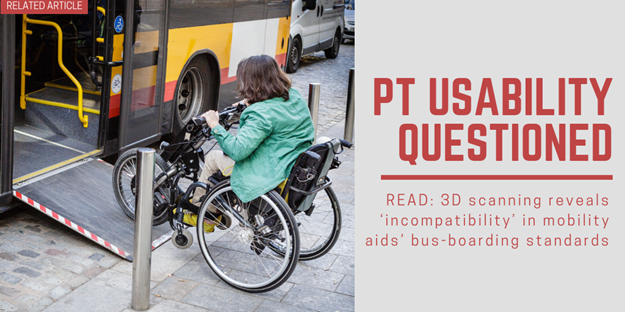BORNE OUT OF a necessity due to The Top End’s monsoonal weather to load wheelchair passengers onto school buses faster, Buslink NT is adding to its fleet of eight Volgren low-floor wheelchair school buses this month, it’s reported recently.
Proof such low-entry buses are still making a difference in Darwin nearly 15 years after the much-needed bus-body design was introduced into that area, Buslink NT’s fleet of low-floor, Volgren-built, wheelchair-accessible school buses remains one of the best examples in Australia of how local conditions can influence bus body design and engineering, it states.
The brainchild of Buslink Director, Mick Hannon (who was, at the time, Buslink NT’s managing director), the company’s existing fleet years ago had external wheelchair lifters only, which were not conducive to Darwin’s savage monsoon season, it’s reported.
Hannon came up with a vehicle design to enable children with special needs to board the bus in seconds with their wheelchairs – speed being a critical factor in keeping passengers dry.
Buslink NT’s current MD, David Hannon (Mick Hannon’s brother) said they needed a solution that kept passengers out of the weather while getting on or off the bus.
“If you’ve been to Darwin during the monsoon season, you’ll understand about extreme weather conditions and, as a bus operator, you need to factor that into the design of your vehicles.”
“We thought of a low-floor solution that was adaptable and could be reconfigured in minutes for wheelchairs.”
Unable to find a suitable vehicle in the market, Buslink took the idea to chassis supplier MAN and bus-body builder Volgren, which subsequently developed the first low-entry wheelchair accessible school bus in 2004.
Now, close to 15 years later, Buslink NT successfully runs a fleet of eight of the easy-boarding school buses and is due another Volgren easy-boarding bus being delivered this September.
David Hannon said the adaptable design that Volgren came up with has removable seats, as well as an internal wheelchair lift.
“The internal wheelchair lift is another way of reducing passengers’ exposure to the elements and doubles the amount of wheelchairs we can carry by [letting us store] an additional four chairs in the top section of the bus,” Hannon said.
He adds that feedback from the carers stationed on the buses indicates the quick loading is less stressful for the passengers, resulting in a more enjoyable journey.
Volgren CEO Peter Dale said the company’s long association with Buslink, particularly in the Northern Territory, had led to a range of vehicle design improvements across all body types over a 25-year period.
“The extreme weather conditions in Darwin are challenging for any vehicle. Feedback from Buslink regularly informs our sales and engineering teams, helping us deliver buses better suited to local conditions,” Dale said.



